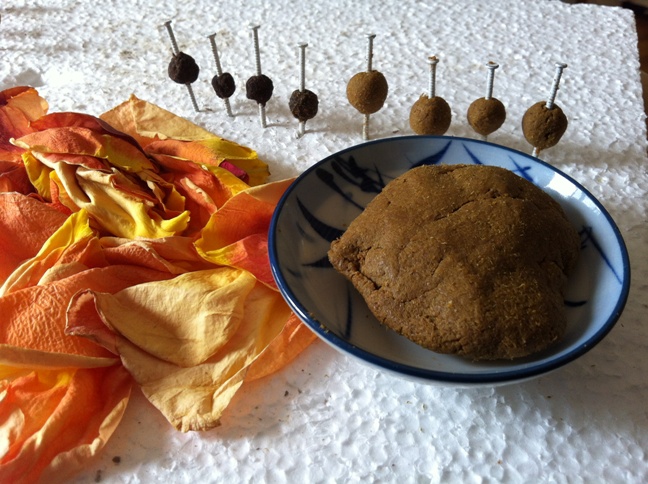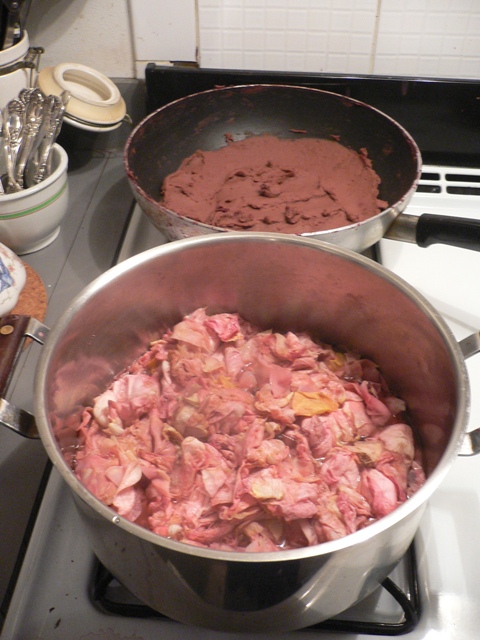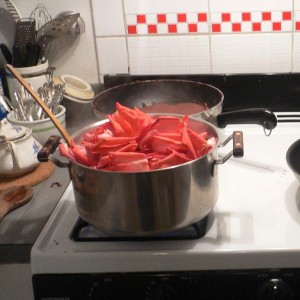Making Traditional Beads from rose petal “clay”

The rose petals became rose clay, which is on the plate, and then rose beads. The large ones will become more or less the same size as the smaller already dried ones.
If your rose clay is now dry and can hold a rounded shape, you can proceed to make balls, ovals, or even squares of clay as your beads. Traditional rose beads will shrink quite a lot, so if you want a bead of a particular size, make sure you make it bigger than the final size you are hoping for. I really recommend doing a little testing – you can make some test beads to check for shrinkage before you start to make the final beads.
Put a nail, brad, or beading pin through the bead to make the hole for stringing. I almost always use nails now, because the bigger hole is good if you have a heavier string, or use elastic beading thread. For bracelets I almost always use elastic. It is especially convenient for older people with arthritis. If you are sure you will use silk thread or something really thin, then you can use a thinner nail or beading pin.
You must move the bead up and down on the nail or pin or else it will actually stick to the nail and is almost impossible to remove. Take the bead off the nail after 24 hours unless the clay was very wet.
Before you string the beads, let them dry for a few days to a week. Longer never hurts. In warm weather they will dry faster in the sun, or if the weather is too cold, in a warm place such as over a radiator or in the oven if you have a pilot light. When you wear the plain beads they will get darker and shinier from the oils in your skin.
Do not store rose petal beads in a plastic bag or they may mold. It is smarter to leave them out in a dry place for several months to be sure that all the residual moisture is gone. I like to store them in a box with some rose petals and a small cotton ball that has some rose oil essence on it.
Please don’t get water on your rose beads. They look like some sort of natural or ceramic bead, but if you get them wet from rain or jumping into a swimming pool they will disintegrate. I know because I did tests. If you do get some water on them, please dry them afterwards. Treating them with sealers will keep that from happening.
Rose beads can be given a protecting coat of low gloss Tung Oil, which you can get in a hardware store, or you can use acrylic sealants that are used for crafts. Make sure the sealer can be used next to your skin. Even if you put some sealer on them, you still can’t go swimming with them on. After a long time of trying different options for sealing the beads, I have settled on sealant, in order to keep them from staining clothes if it rains or you sweat. You can rub in a little rose oil after the smell of the tung oil is gone if you want to help them retain their fragrance.



